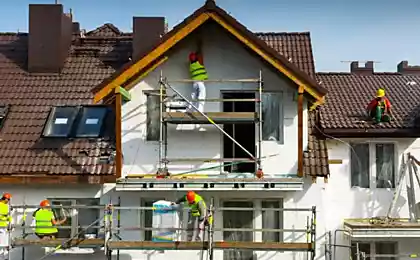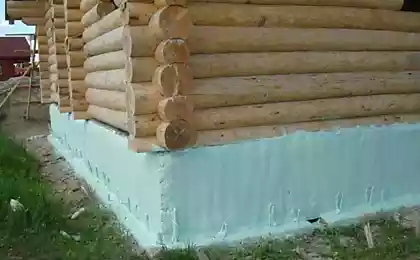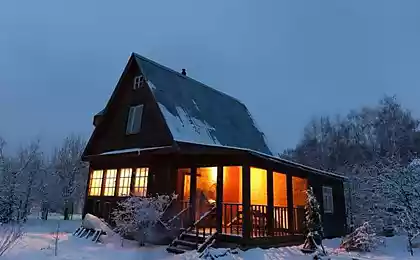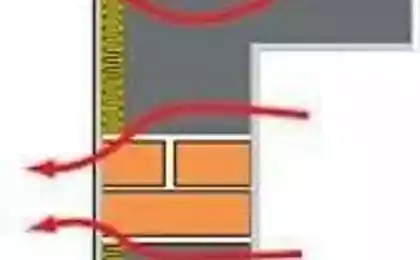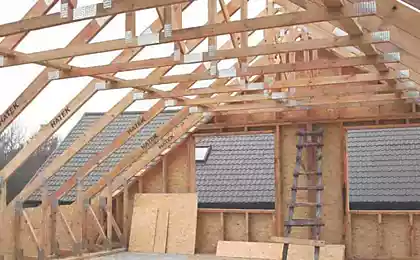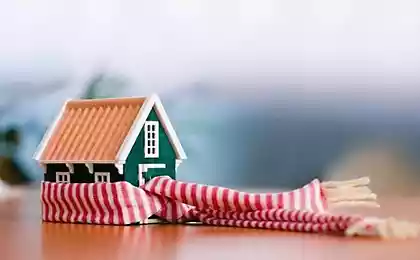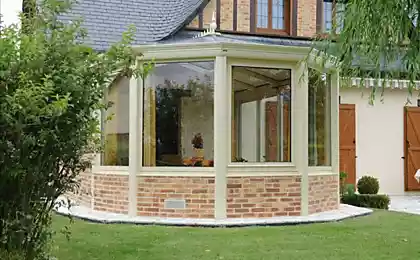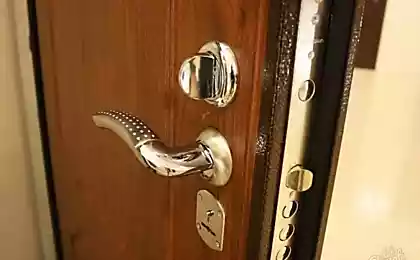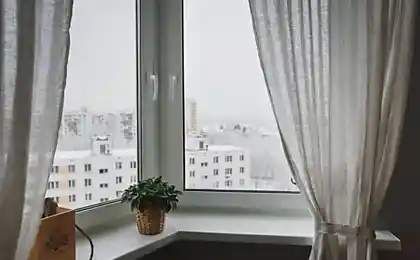586
How to insulate an attic: answers to the most pressing issues
How to insulate the attic to make it cosy at any time of the year – that worries many gardeners and owners of country houses in anticipation of cold weather. In the process, there is a lot of questions: how to do quality insulation of roof, what materials to use for floors, what insulation thickness is optimal and so on.
1. Why insulate the attic?The roof of the attic is a "hat house" that protects it from precipitation and attic room from cooling and overheating. It is established that the heat loss through attic floors and roofs can be from 16 to 20% of the total — will agree that it's a lot. This is because warm air is lighter than cold, rises up and the temperature under the roof is about 2 degrees higher than in the attic room. In addition, warm air is normally more humid than cold — there is a greater likelihood of condensation.
Another plus in favor of the thorough insulation of the roof – prevent the appearance of icicles. In winter, when the ascent of heat from the roof that is poorly insulated, the snow begins to rapidly melt — water flowing down, in temperatures well below freezing into icicles.
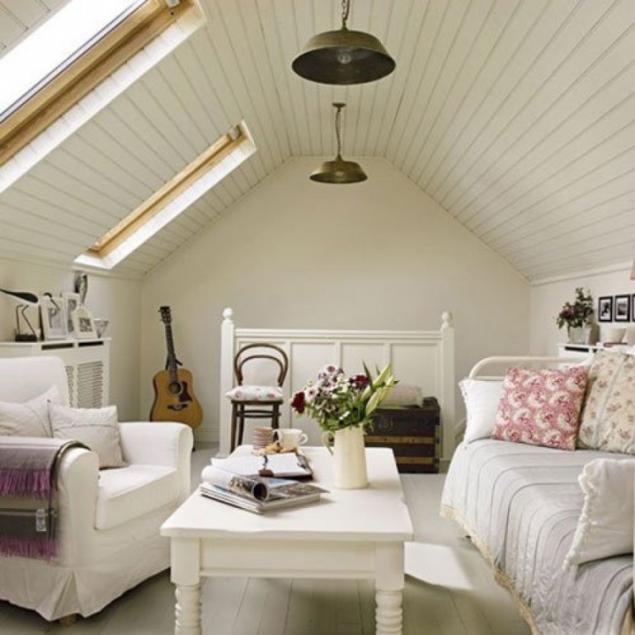
By the way, in summer the heat insulation is also indispensable: in hot weather the exterior roof surface may be heated to 70-80 °C and the room temperature to rise to 40-50 °C. Proper insulation allows you to maintain the inside of the attic is a comfortable temperature both in winter and in summer.
2. What material to use for insulation?Reliable roof must be made of durable material — fire-resistant and environmentally friendly. This applies equally to the roof and its insulation. Winterizing the inclined surfaces of the attic requires a lightweight material with low thermal conductivity — it should exactly fill the space between the rafters and leave no gaps and drafts. One of the popular materials – insulation slabs made from stone wool: due to the special technology they have a spring in the region, providing a dense adjunction on all sides.
In accordance with existing rules and taking into account the recommendations of experts, for the roof is considered to be an effective insulation thickness of 150 mm. depending on the geographic location, it varies. Thus, residents of the Central region to insulate the roof with a layer thickness of not less than 200 mm; in Siberia and the Urals, it is recommended to select a layer up to 250 mm. In the South of Russia will be enough 150 mm – generally for reduction of air conditioning costs.

3. What is the difference between membrane and vapor barrier?The process of insulating the roof takes place in several stages: under the roofing membrane laid will protect you also, then mount the layer of insulating material, and over it closely stacked vapor barrier film. Both materials are designed to protect building structures from moisture and water vapor. They create an obstacle to the formation of condensation in the insulating layer.
The membrane we use to protect the insulation from wind and moisture entering the building from the outside, and also for the withdrawal of water vapor from the structure. A distinctive feature of membrane installation – smooth side to the "street."
Vapor barrier film prevents penetration of water vapors into the design of the room. For this two-layer fabric a smooth surface is secured closely to the insulator on the inner side of the house. Membrane and protectors are fastened with a construction stapler.
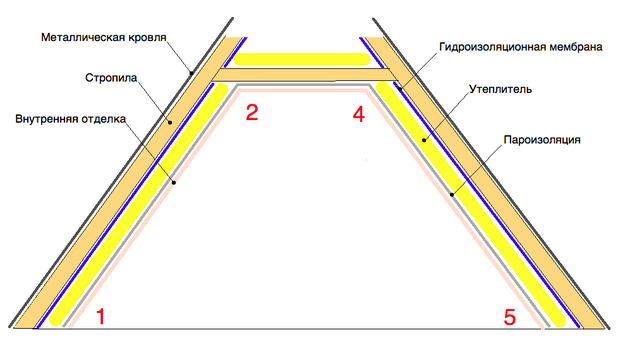
4. How to calculate the number of packages of insulation material? For the calculation formula: area of the insulated surface (in square meters) multiplied by the assumed thickness of insulation (in mm) divided by 1000, and then the resulting number divided by the volume of a single package (in cubic meters).
You can easily do: to take the area of the roof, divide it by the number of square meters in one pack of insulation, and then the resulting number multiplied by the desired number of layers. To this number add 10% and get the required number of packages of insulation.
The easiest option is to use the settlement calculator on the website of the manufacturer of the insulation.

5. How to get rid of cold joints? To cold bridges or thermal bridges include the various joints between the parts of the structure, reducing the efficiency of thermal protection of space as a whole. There are several effective ways to neutralize the influence of thermal bridges:

6. Do I need to insulate the intermediate coating? From vapor barrier can be safely discontinued if the floor is not fixed strong temperature changes, or we are dealing with a heated winter loft. In such cases the final coating can be placed directly after the layer of insulation. Categorically you should not use a vapor barrier under hardwood flooring of the attic — warm air will easily penetrate the cover up and allocate the condensation on the roof covering. When the vapor barrier necessary? Sometimes without vapor barrier film can not do. For example, in the summer the attic, I don't want to connect to the heating system, and also with the use of linoleum (or other non-permeable material) as the flooring. The lack of a vapor barrier the floor in the presence of an unheated attic will cause the warm moist air from the first floor will be free to go into the interior of the building — it creates condensation. The accumulation of moisture in the structure will reduce the level of thermal protection and durability. The presence of the linoleum with a non-insulated attic will exacerbate the problem significantly: rising moisture will accumulate under it, encouraging the appearance of mold.published
Author: Ira Kobylinska
P. S. And remember, only by changing their consumption — together we change the world! ©
Source: www.inmyroom.ru/posts/11229-kak-uteplit-mansardu-otvety-na-samye-aktualnye-voprosy
1. Why insulate the attic?The roof of the attic is a "hat house" that protects it from precipitation and attic room from cooling and overheating. It is established that the heat loss through attic floors and roofs can be from 16 to 20% of the total — will agree that it's a lot. This is because warm air is lighter than cold, rises up and the temperature under the roof is about 2 degrees higher than in the attic room. In addition, warm air is normally more humid than cold — there is a greater likelihood of condensation.
Another plus in favor of the thorough insulation of the roof – prevent the appearance of icicles. In winter, when the ascent of heat from the roof that is poorly insulated, the snow begins to rapidly melt — water flowing down, in temperatures well below freezing into icicles.

By the way, in summer the heat insulation is also indispensable: in hot weather the exterior roof surface may be heated to 70-80 °C and the room temperature to rise to 40-50 °C. Proper insulation allows you to maintain the inside of the attic is a comfortable temperature both in winter and in summer.
2. What material to use for insulation?Reliable roof must be made of durable material — fire-resistant and environmentally friendly. This applies equally to the roof and its insulation. Winterizing the inclined surfaces of the attic requires a lightweight material with low thermal conductivity — it should exactly fill the space between the rafters and leave no gaps and drafts. One of the popular materials – insulation slabs made from stone wool: due to the special technology they have a spring in the region, providing a dense adjunction on all sides.
In accordance with existing rules and taking into account the recommendations of experts, for the roof is considered to be an effective insulation thickness of 150 mm. depending on the geographic location, it varies. Thus, residents of the Central region to insulate the roof with a layer thickness of not less than 200 mm; in Siberia and the Urals, it is recommended to select a layer up to 250 mm. In the South of Russia will be enough 150 mm – generally for reduction of air conditioning costs.

3. What is the difference between membrane and vapor barrier?The process of insulating the roof takes place in several stages: under the roofing membrane laid will protect you also, then mount the layer of insulating material, and over it closely stacked vapor barrier film. Both materials are designed to protect building structures from moisture and water vapor. They create an obstacle to the formation of condensation in the insulating layer.
The membrane we use to protect the insulation from wind and moisture entering the building from the outside, and also for the withdrawal of water vapor from the structure. A distinctive feature of membrane installation – smooth side to the "street."
Vapor barrier film prevents penetration of water vapors into the design of the room. For this two-layer fabric a smooth surface is secured closely to the insulator on the inner side of the house. Membrane and protectors are fastened with a construction stapler.

4. How to calculate the number of packages of insulation material? For the calculation formula: area of the insulated surface (in square meters) multiplied by the assumed thickness of insulation (in mm) divided by 1000, and then the resulting number divided by the volume of a single package (in cubic meters).
You can easily do: to take the area of the roof, divide it by the number of square meters in one pack of insulation, and then the resulting number multiplied by the desired number of layers. To this number add 10% and get the required number of packages of insulation.
The easiest option is to use the settlement calculator on the website of the manufacturer of the insulation.

5. How to get rid of cold joints? To cold bridges or thermal bridges include the various joints between the parts of the structure, reducing the efficiency of thermal protection of space as a whole. There are several effective ways to neutralize the influence of thermal bridges:
- to accurately measure the magnitude of the gaps between the rafters;
- do not forget the mandatory 2 cm seam allowance when cutting pieces of insulation;
- lay the insulating material strictly from the bottom up to avoid loose fitting plates to each other;
- use the optimal number of layers – for example, if the required thickness of 200 mm, it is more convenient to take 2 layers for 100 mm 4 layer 50 mm;
- fill all insulation, including hard-to-reach places of the frame of the attic;
- pay special attention to the lack of defects in installation vapor barrier: prevent its damage by the fastener, tightly bond the joints of the paintings with tape;
- bet on a special waterproof material to seal the joints between the end rafter.

6. Do I need to insulate the intermediate coating? From vapor barrier can be safely discontinued if the floor is not fixed strong temperature changes, or we are dealing with a heated winter loft. In such cases the final coating can be placed directly after the layer of insulation. Categorically you should not use a vapor barrier under hardwood flooring of the attic — warm air will easily penetrate the cover up and allocate the condensation on the roof covering. When the vapor barrier necessary? Sometimes without vapor barrier film can not do. For example, in the summer the attic, I don't want to connect to the heating system, and also with the use of linoleum (or other non-permeable material) as the flooring. The lack of a vapor barrier the floor in the presence of an unheated attic will cause the warm moist air from the first floor will be free to go into the interior of the building — it creates condensation. The accumulation of moisture in the structure will reduce the level of thermal protection and durability. The presence of the linoleum with a non-insulated attic will exacerbate the problem significantly: rising moisture will accumulate under it, encouraging the appearance of mold.published
Author: Ira Kobylinska
P. S. And remember, only by changing their consumption — together we change the world! ©
Source: www.inmyroom.ru/posts/11229-kak-uteplit-mansardu-otvety-na-samye-aktualnye-voprosy



